How to Recycle Pumpkins After Halloween
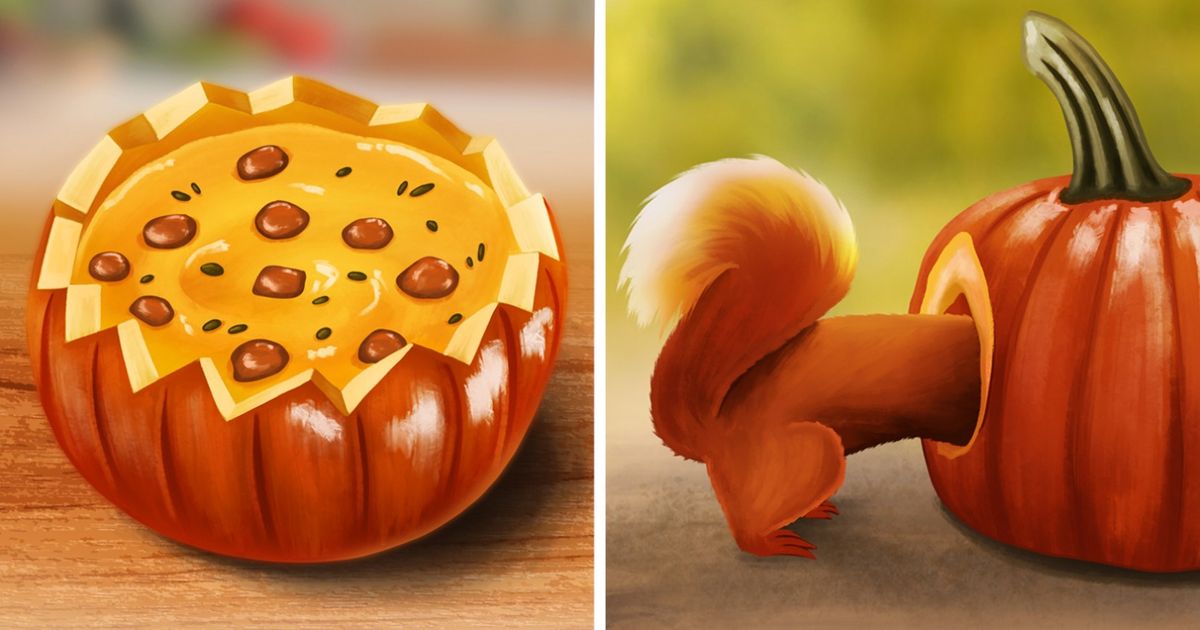
Halloween is upon us again and that means carving season is about to start. While that’s great, every year, thousands of pumpkins get tossed in the trash. In fact, about 1.3 billion pounds of pumpkins in the United States end up in landfills according to the U.S. Department of Energy. That’s why 5-Minute Crafts thought it was a good idea to help people find ways to recycle their pumpkins once the season’s over.
1. Compost them.
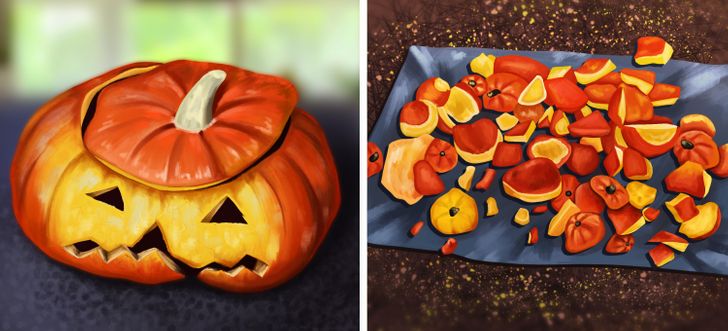
2. Enrich the soil by burying them or using them as pots.
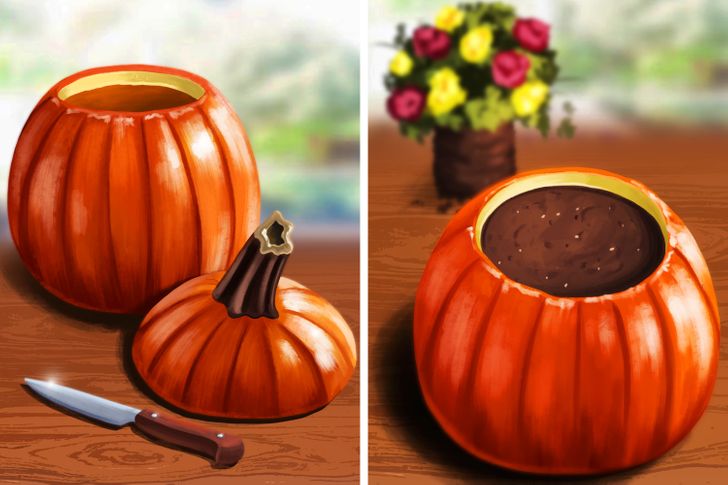
After chopping the pumpkins into small pieces, dig shallow holes into your garden. Place your pumpkins inside and cover them in soil. The pumpkins will eventually break down and enrich the soil. In that way, you’ll improve the health of the flowers and plants in your garden.
- Tip: If your pumpkin is uncarved, you can also just cut off the top, remove the seeds and flesh from inside and fill with potting soil until it is about one-third full. Then place the plant directly into it. You then just have to add more soil and that’s it.
3. Pass them along.
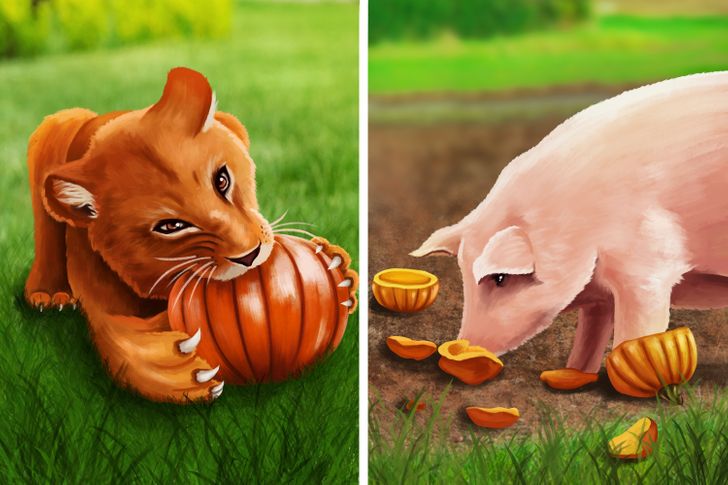
If you don’t want to deal with the pumpkins yourself you can donate them to zoos, animal shelters, farms, or community gardens. They’ll most likely use them to compost or to feed to animals as snacks. Some towns even organize a pumpkin collection drive after Halloween.
- Tip: Organizations such as SCARCE or Pumpkins for the People have drop-off sites where you can take your old pumpkins.
4. Feed your neighborhood’s wildlife.
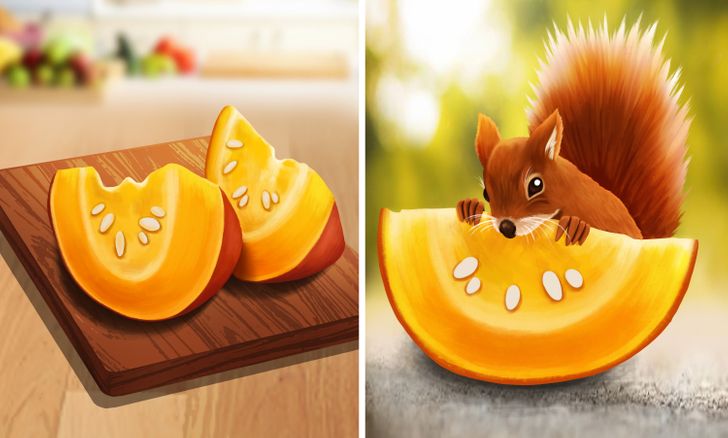
Pumpkins make the perfect snack for neighborhood wildlife like squirrels, deer, or rabbits. Just cut them up into fourths and place pieces around your yard.
⚠️ Don’t feed animals any painted pumpkins.
- Tip: Only use firm, fresh pumpkins. If they are getting soft and squishy or moldy, composting them is a better idea.
5. Make a pumpkin feeder.
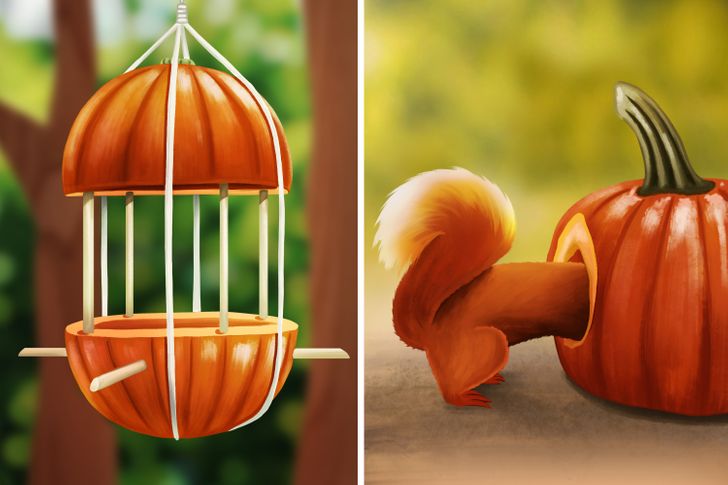
Here are 2 ways to turn a pumpkin into a feeder:
🎃 Cut a pumpkin in half horizontally, empty the cavity, and fill it with birdseed. You can leave it out as it is or even hang it from a tree using thick twine or rope wrapped under the base.
- Tip: You can add the pumpkin’s seeds to your regular birdseed after rinsing and drying them.
🎃 You can also make a snack-o-lantern for wildlife by cutting out a hole to give access to the inside of the pumpkin so that they can eat the flesh.
6. Turn them into bowls.
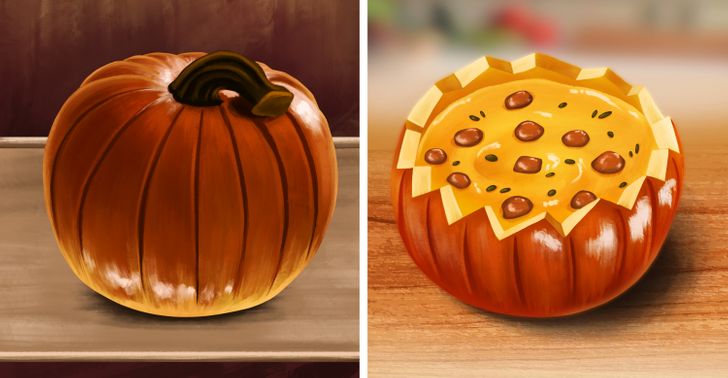
Pumpkin shells (hollowed-out pumpkins) can easily be turned into festive serving bowls. Just place them on a baking sheet lined with aluminum foil after brushing the insides and the tops with a little vegetable oil. Bake at 350°F for 35 minutes and they’re ready.
- Tip: You can toss them into the compost pile after dinner is over.
7. Eat them.
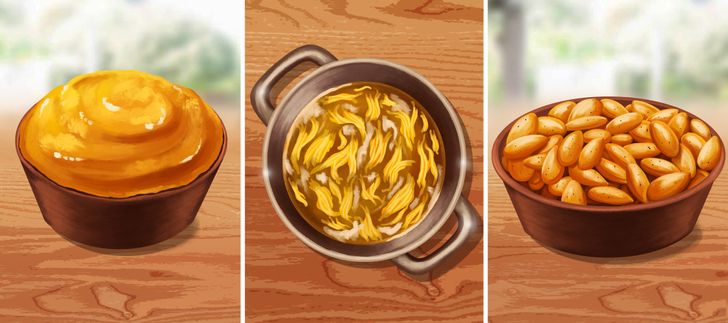
You have several options for eating pumpkins that you’re no longer using as decoration, just make sure they’re not painted.
🎃 Purée, for example, is a common way to use the fleshy insides:
- Cut your pumpkin down the middle, scoop out the seeds and guts, and set them aside.
- Place the pumpkin cut-side down in a baking dish with about a cup of water, and bake for about 90 minutes or until the flesh is tender.
- Then, simply scoop out the flesh and puree it in a food processor. Once you’ve made your pumpkin purée, it’s ready for use in all your favorite pumpkin recipes, from pies to pancakes and soups.
- Any extra can be stored in the freezer for several months.
🎃 Leftover guts can be used to make stock:
- Separate the seeds from the guts and set them aside.
- Place the guts in a pot filled with water and boil. You can add other unwanted vegetable pieces, like celery tips or carrot tops, to add more flavor.
- Boil for about 30 minutes, or until the water begins to change color.
- Strain your stock, putting aside the broth and setting the guts and vegetable pieces aside to be composted. Pumpkin stock is perfect for adding flavor to soups or casseroles, and you can freeze any extra for later use.
🎃 Finally, you can also eat the seeds after preparing them in the following way:
- Rinse them thoroughly while you preheat the oven to 325°F.
- Place them in a single layer on an oiled baking sheet, stir them around to coat them with oil, and bake them uncovered for 1 hour.
- Add salt for a classic roasted taste, or if you have a sweet tooth you can sprinkle them with brown sugar and cinnamon before roasting or any other seasoning you like. Then bake the seeds, uncovered at the same temperature for 10 to 15 minutes more or until toasted, stirring once.
- Store your roasted pumpkin seeds in a covered container at room temperature for up to a week.
8. Make a DIY face mask.
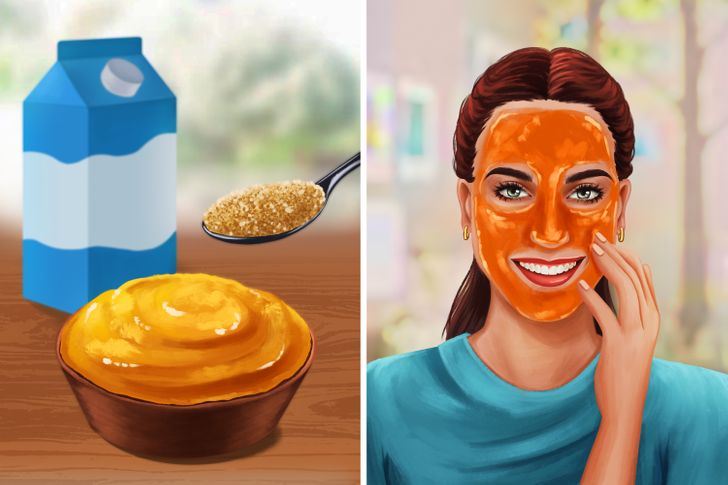
After pureeing it, add 3 teaspoons of brown sugar — which will act as a natural exfoliant — and a tiny splash of milk to 5 teaspoons of pumpkin purée. Mix it all together, and apply it to your face in a circular motion, avoiding the eye area. Let it sit for 20 minutes and then wash your face.
- Tip: This mask has a great smell, plus pumpkins are rich in zinc and vitamins A, C, and E, which promote skin health.
Do you know of any other ways to recycle pumpkins after Halloween? Do you think these small gestures can help us take care of our planet?